Well here you go. Thanks to www.tripline.net, I was able to create a map of our complete route while touring around the U.S. for 3.5 months.
We set out during the late summer of 2014 from Northern California and finished at the end of the year back home. The greater part of the first month was spent in California and the national parks of Utah, Wyoming, and Colorado, where the autumn months are most enjoyable. In the second month we hurried through the cities of the Midwest, Northeast, and a bit of the South with the goal of escaping the region’s brutal cold. By the third month we were cruising through the South and eventually reconvened with national park territory and the familiarity of the California coast.
Some of the wonderful scenery while on the road: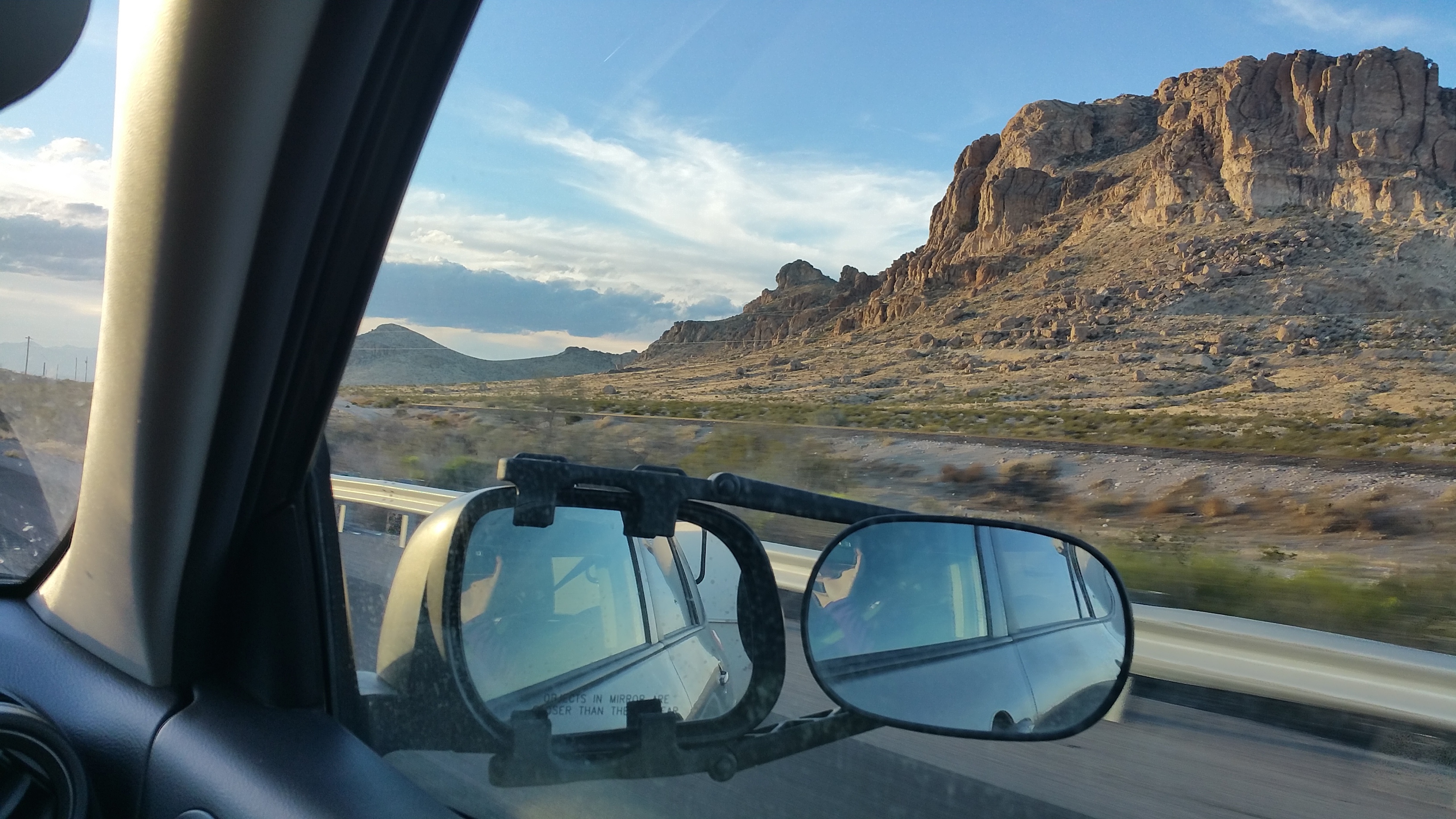
We even lucked out with the lowest gas prices I’ve seen in years: 2.27/gal at Chevron!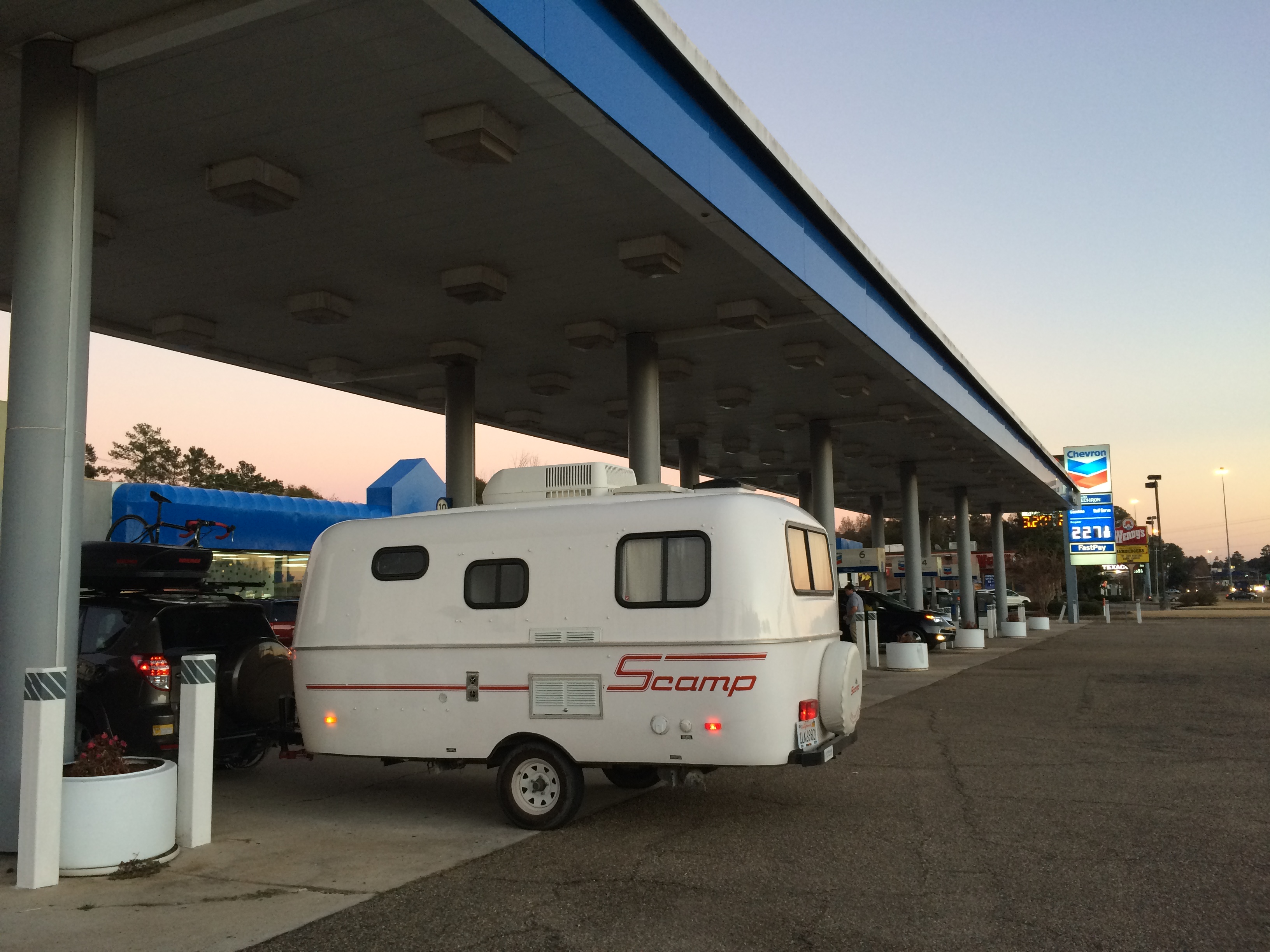
Throughout this journey our legs were chiseled by arduous hikes, our tummies were filled (and expanded) by authentic local cuisines, our ears were rewarded with various genres of music, pitches of laughter, and inspirational stories, and our souls were touched by other citizens, young and old, of this massive country. Our eyes were treated with the diversity of America–from the trees, canyons, waterfalls, and mountains of nature to the bridges, skylines, museums, and nightlife of urban grandeur, we embraced it all. One day we’d be resting on boulders and covered in sweat and dirt, gnawing at beef jerky, apples, and Chex Mix for lunch, and the next day we’d be dining in some swanky fine-dining restaurant in the big city. Regardless of our adventure, whether dressed in the same cargo pants the last four days or a trendy hat with makeup for a night of dancing in downtown, we both returned to the same place every night: Scromp, our Scamp, our trailer, our home.
A final photo bidding farewell to Scromp after the journey: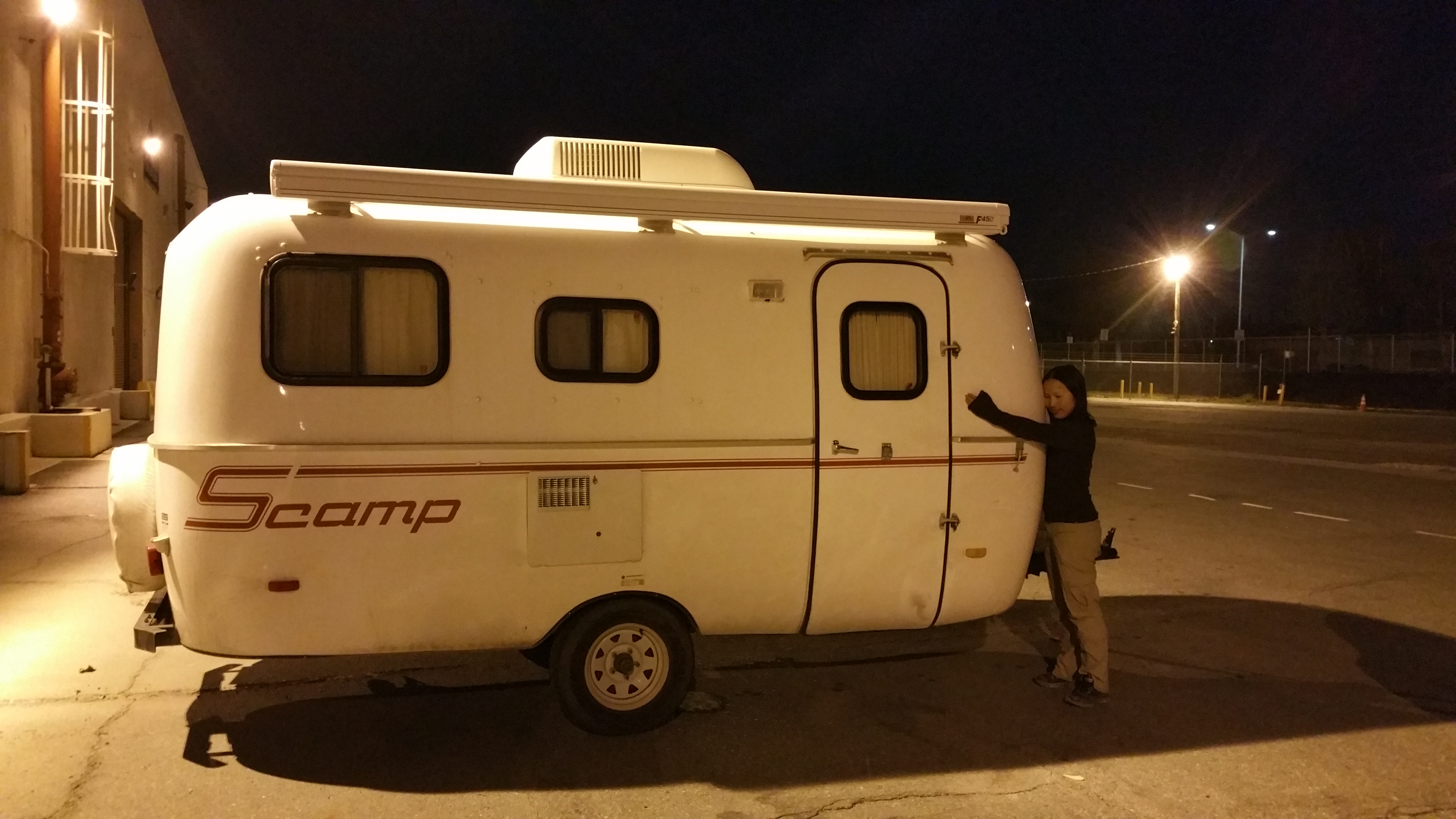
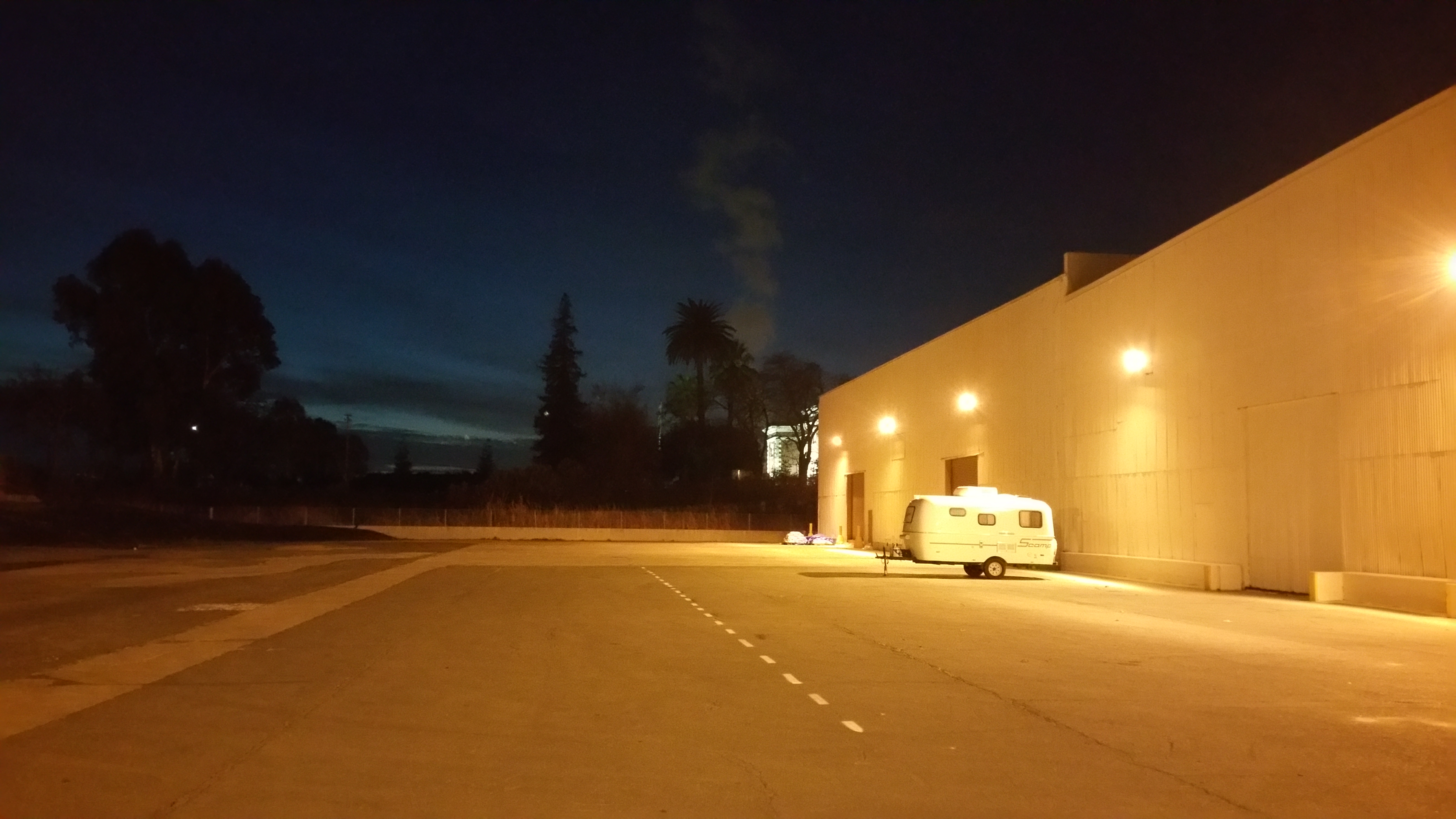
There have been more than several people who have asked me, “Your road trip looked amazing, but it couldn’t have topped 5 months in Southeast Asia, right?”
I begin my answer with this statement: There is so much naivety in those who claim international travel > domestic travel. America is absolutely fucking amazing, and Americans should see their own country. I can’t think of another country that boasts so much public land, national forests, and open wildernesses for anyone to explore and temporarily reside in. As one of the largest countries in the world, one cannot see it all in a given lifetime…there is too much to do and too much to see. The whole region of mainland Southeast Asia is merely a fraction of the entire U.S! Each state is practically like its own country in terms of its size, people, food, culture, music, major city, and even time zone! 3.5 months was hardly enough. I need to do this again. Soon.
This entire massive area in Rockville, Utah was public land. That white dot in the distance on the center left is Scromp.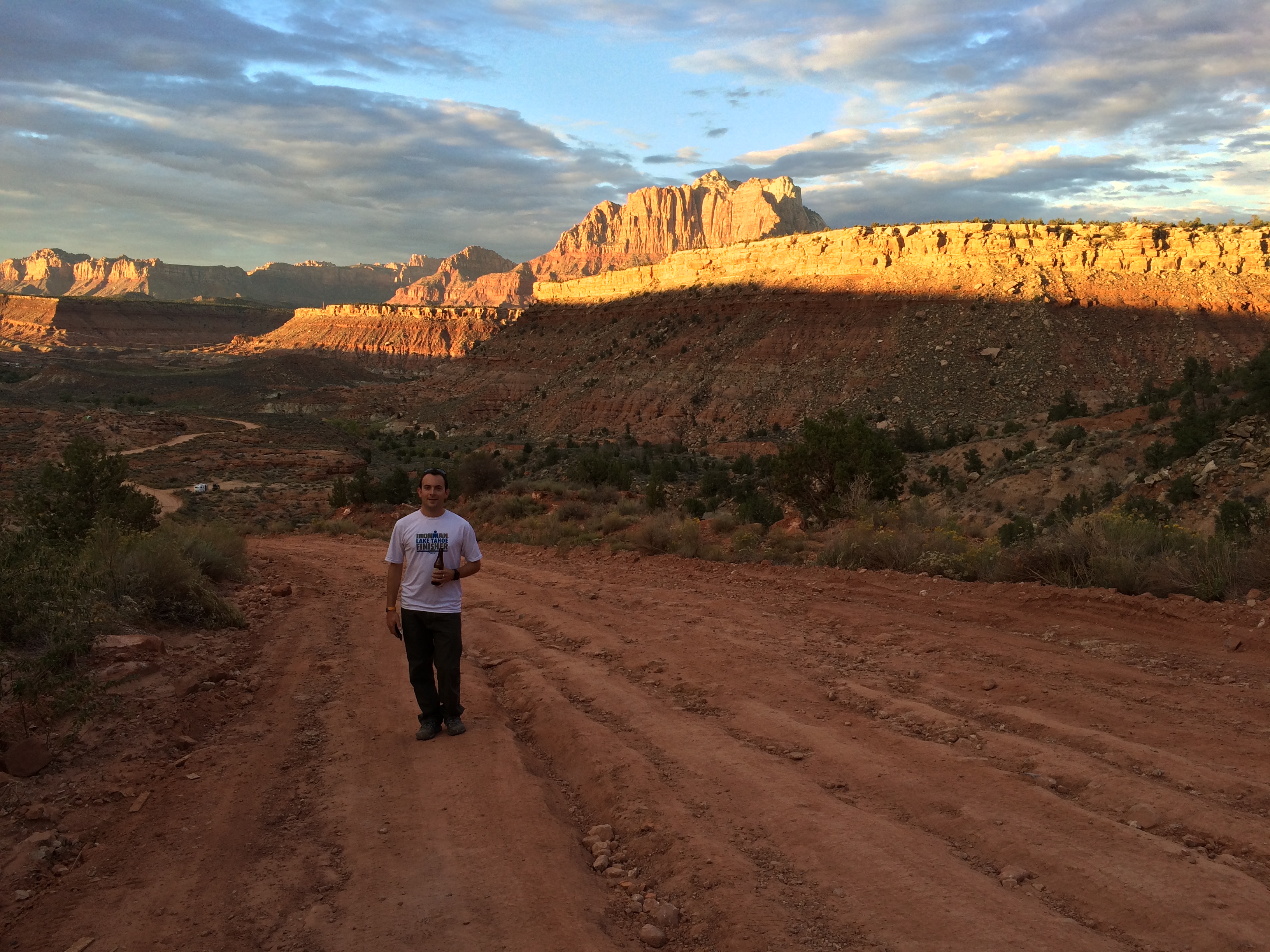
Yes, our 5-month Southeast Asian tour from March to August was incredible. Attempting to communicate in different languages (such as the number of times we conversed with a Vietnamese man who only spoke Vietnamese and French–I’d speak to him in Vietnamese, Chris would speak to him in French, and Chris and I would speak to each other in English), broadening our food choices (yes, we ate dog in Vietnam), and getting a taste of everyday life (having dinner with a Laotian family when a fierce thunderstorm knocked everything out) was just a small part of it. We each lived out of a 50L backpack for 5 months, constantly unpacking and repacking all our belongings every few days.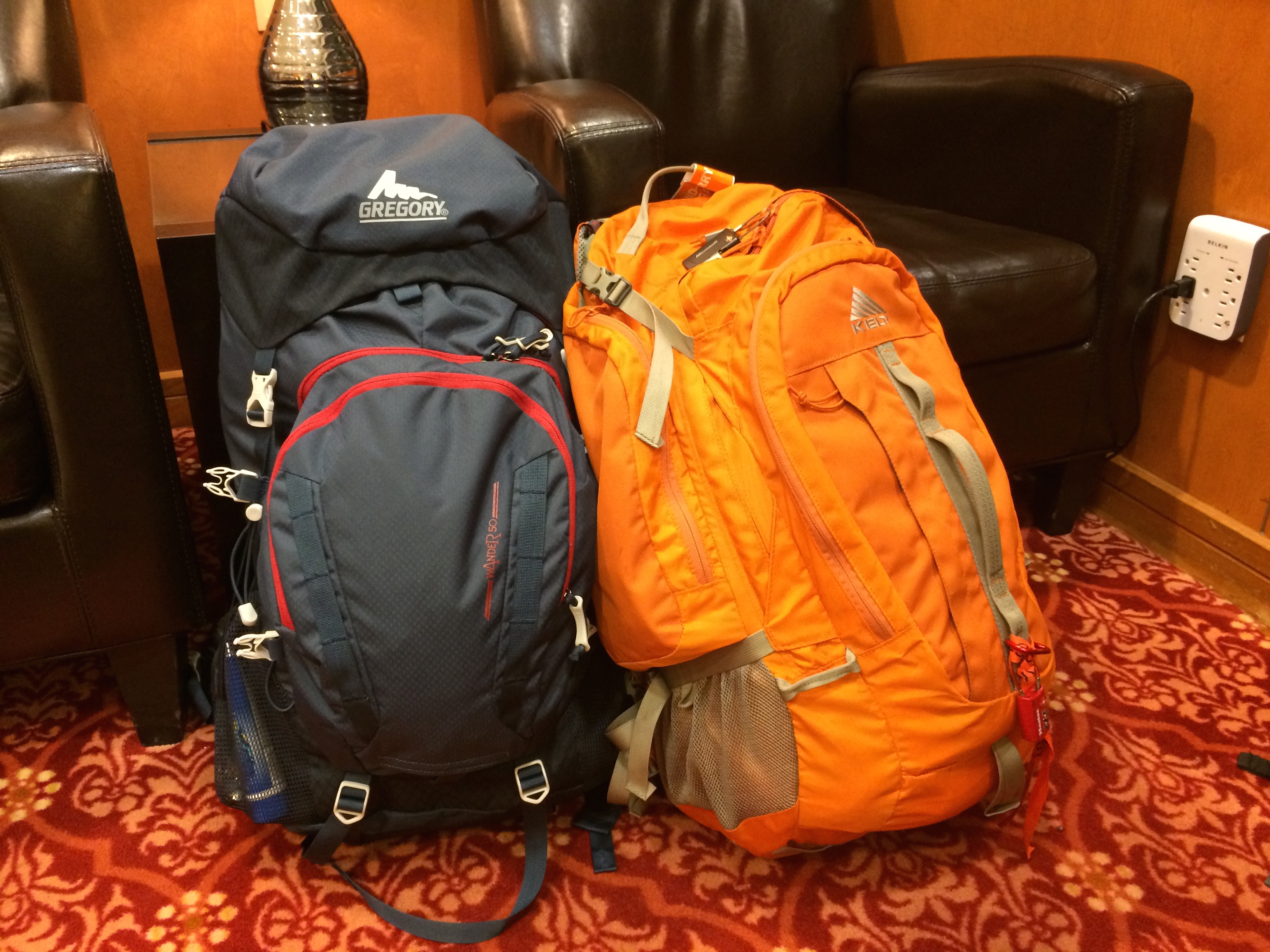
We lived off of 2 pairs of pants, 3-4 shirts, and 3 sets of socks and undergarments, hand-washing clothes as we traveled. We weren’t even sure if we were going to be in the same country or a different one the following week. Home was always a dingy motel/guest house, and we never knew how shitty it was going to be (mildew in the bathrooms were almost always a given, and a cockroach crawled across Chris’ face just once). Sometimes we’d score on $15/night hotel rooms: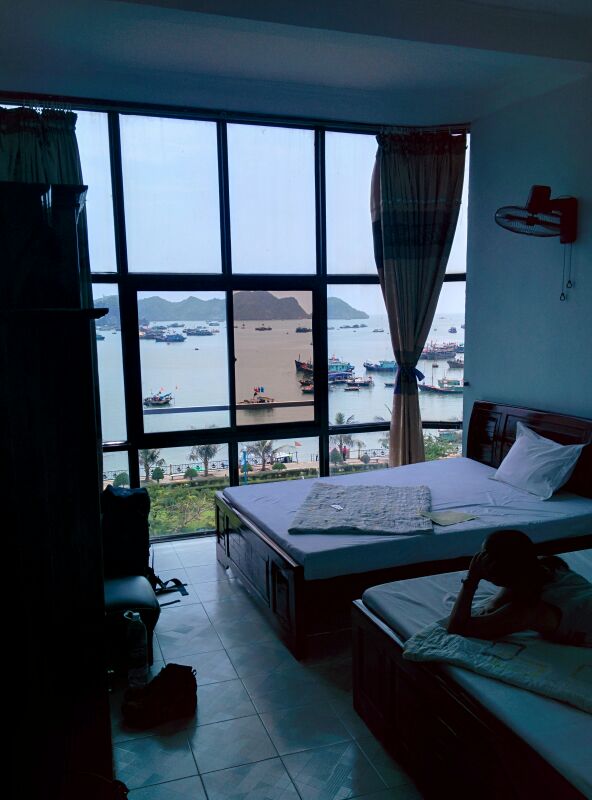
Yes, these were all memorable moments…
…but we never had a place called home.
That’s why we loved traveling across the U.S. so much. That’s why we loved living out of our 16′ trailer so much. Everyday we had a place called home. We’d dig for the familiar key, unlock the rounded door, and enter the little home on wheels with fuzzy walls and little propane stove and miniature cozy bed. Even our “pet” stuffed animals awaited us.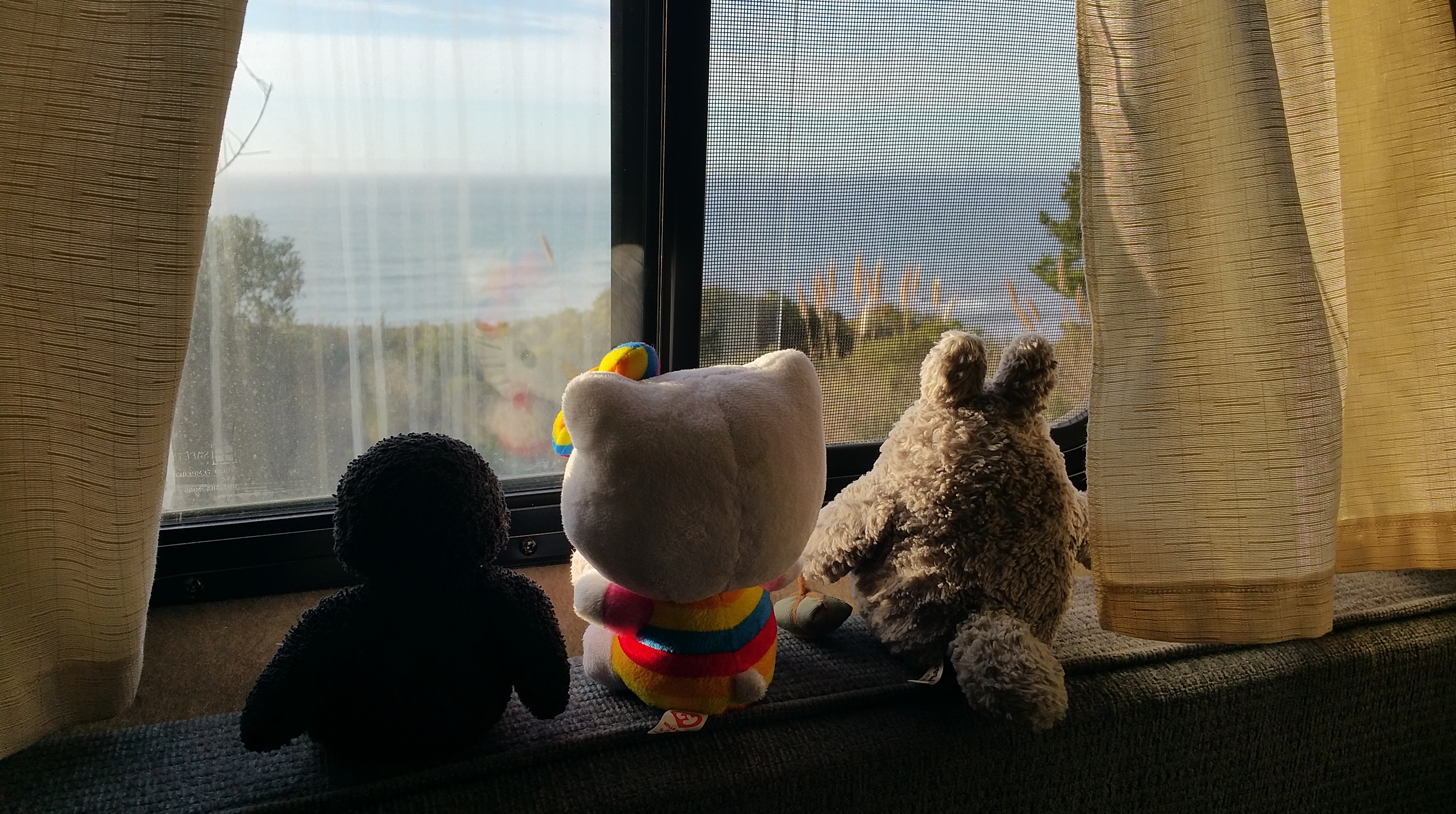
Within our first month of traveling, between Wyoming or Utah or wherever during a long drive, I turned to Chris and said, “I knew I would enjoy this road trip…but I didn’t expect to love it this much.”
In Southeast Asia, we’d have amazing days and return to our unfamiliar hotel room. Clean, decent, free wifi and breakfast, but still, unfamiliar. While roadtripping the U.S., we’d also have amazing days but at the end of the day, we’d hang out in our familiar home, eat home cooked meals, and be surrounded by our favorite possessions. Our wardrobe was slightly larger since we weren’t living out of a 50L bag, which allowed us to have a larger variety of clothing. Our sports equipment included swimming, cycling, running, skydiving, and camping gear. Albeit miniature, I had a full kitchen, and Chris had all the electronics he needed. Our solar panels kept us independent, water was easy to retrieve, and our toilet/shower was handy when we camped in the middle of a desert. Unlike in Southeast Asia, we had more than what we needed. We had our passions and a home.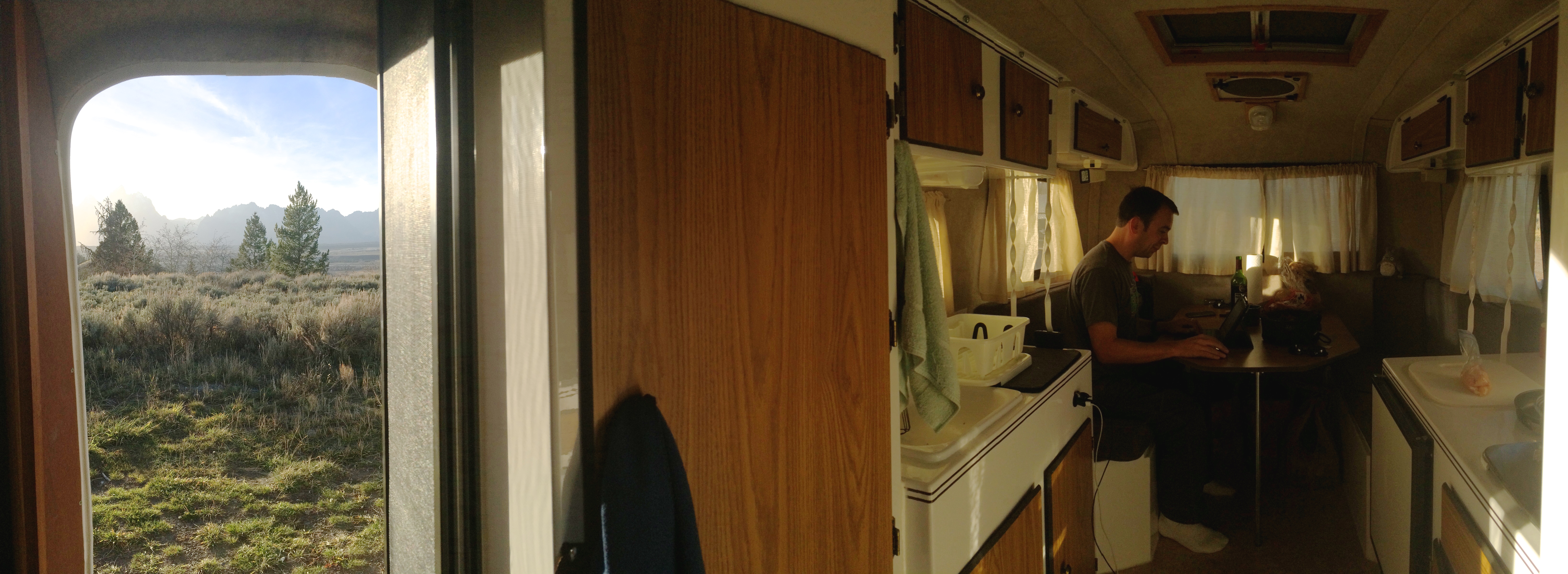
The length of the Scamp trailer is 16′ long from tongue to bumper, which makes the interior living space only 13′ x 6′ wide. Living in a trailer and driving across the country entailed not just adventure and fun, but also lessons on conservation and maximizing space. Imagine living in a 13’x6′ home and sharing it with your significant other for three months. With a single battery and solar panels, 26 gallon gray water tank (sink/shower runoff), 9 gallon black water tank (human waste such as pee and poop), and 12 gallon fresh water tank (potable water), we learned a bunch of things in order to conserve water and energy. I kept notes on what we did and how we did it because I found them humorous, helpful, and environmental.
***
FREE CAMPING
The idea of paying $25/night just to park our vehicle was absurd to me, and the fact that RV camping with full hookups averaged $40-$50/night was even more ridiculous. Thus, I relied heavily on www.freecampsites.net and other state websites to find free dispersed camping areas, BLM land, and other miscellaneous parks that offered free parking. If we simply needed a place to park and sleep for the night between long drives, we spent the night at a Walmart parking lot. We always let a manager know, and we felt safe because there were other trailers, trucks, and 24-hour security vehicles. Throughout the entire trip, we only paid for 5 nights at 4 different campsites: 1 night at Canyonlands National Park for $10, 1 night at Bryce Canyon National Park for $25, 1 night at Rocky Mountain National Park for $20, and 2 nights at T.O. Fuller State Park in Memphis for $20/night. (T.O. Fuller had full hookups, free showers, and super cheap laundry facilities.)
Our favorite places to camp were dispersed areas. Not only were they free, they were seldom known about which granted the whole area to ourselves:
A desert outside of Goblin Valley State Park:
The Wall outside Badlands National Park:
WATER
– In addition to our 12 gallon water tank, we always kept a spare 7 gallon jug in the car. When we boondocked for 5 days outside of Grand Teton National Park, we would drive into the park everyday to hike. On our way out of the park we would fill up our jug for free, return to Scromp, and fill him up. Most visitor centers and parks had water spigots. In cities, we’d fill up at a friend’s house, but if that convenience wasn’t there, it was easy to find a water machine for 20¢/gallon. For 3.5 months, we only paid for water three times, each time costing us around $2 to fill the jug.
– While at a visitor center or park with water spigots, we also filled up a couple of our water bottles in addition to the jug. With so much hiking, we didn’t want to tap into Scromp’s fresh water tank or the jug for drinking water.
Filling up Scromp and the water jug at a random water stop along a highway near Kanab, Utah: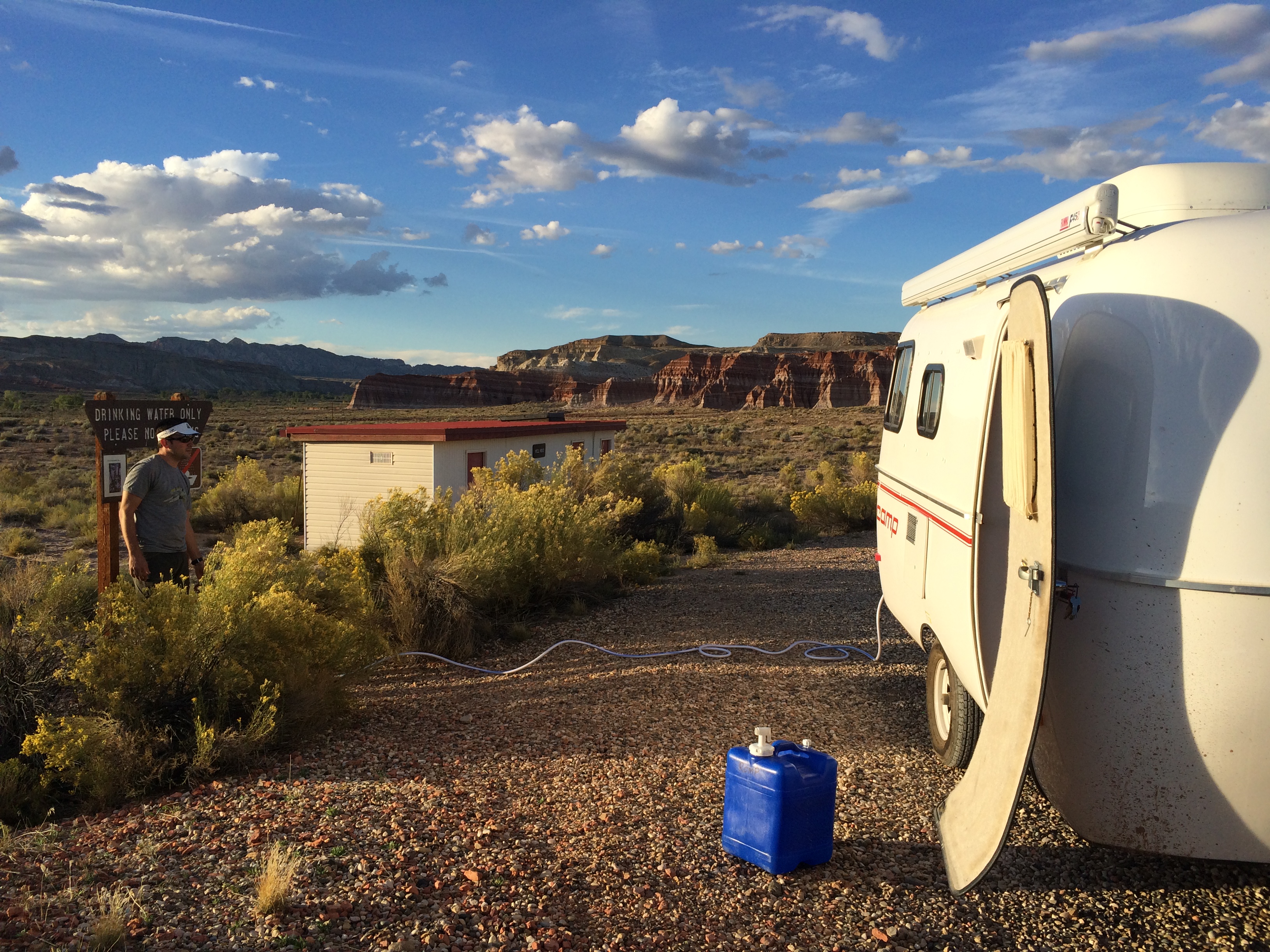
– If we had the luxury of boondocking in front of a friend or relative’s home, we’d take in our pots, pans, and dishes to wash them. Our cleverer idea was bringing in vegetables to wash before heading out to a remote area. It was nice having clean mushrooms and lettuce upon arrival at a dispersed camping area. I wouldn’t need to use our own water source to wash all the damn vegetables!
– After meals we wiped down all our plates, bowls, pots, and pans with a paper towel. Excess sauces and crumbs went into the trashcan, and this made washing our kitchenware much easier and faster. At home, we’d always run a shit ton of water over our dishes just to clear them. Not here. Water was a luxury and we couldn’t let our water run endlessly just to dissolve some sauces.
– Most people cook in a systematic way, with the goal of using as few pots and pans as possible. In addition to thinking this way, our method of washing dishes also became methodological to conserve water. How can I reuse water run off from this plate for the greasy pan? I’d ask myself. I’d place the pan in the sink and wash our utensils and plates over it so the water runoff could dribble into the pot. Chris would even plug the sink and wash everything in it, do a quick rinse, and only end up using about a half gallon of water to wash dishes from dinner.
– My favorite tactic for conserving water was our method of showering. I’m not just talking about doing a quick rinse, turning off the water to soap myself, and turning back on the water for another final rinse. Like at home, we had to let the shower run for a while before the water got hot. I hated the idea of letting our precious potable water run down the drain for the sole purpose of heating up. So what did I do? I brought a kettle into the shower, let the shower head run water into the kettle until the water got warm, turned off the water, and then returned the kettle to the stove. The water in the kettle amounted to about 3-4 servings of hot tea/coffee the next morning. If we didn’t want tea or coffee in the morning, I would pour the water from the kettle back into Scromp’s freshwater tank.
POWER
– Solar panels were a must. We really only needed a single 100W panel, but having two panels completely charged our battery within a few hours. While we filled up on propane about every 2 weeks for cooking and heating, solar energy powered the battery which fueled the fan, the furnace, all our LED lights, the water pumps, and inverter. Yay solar power!!!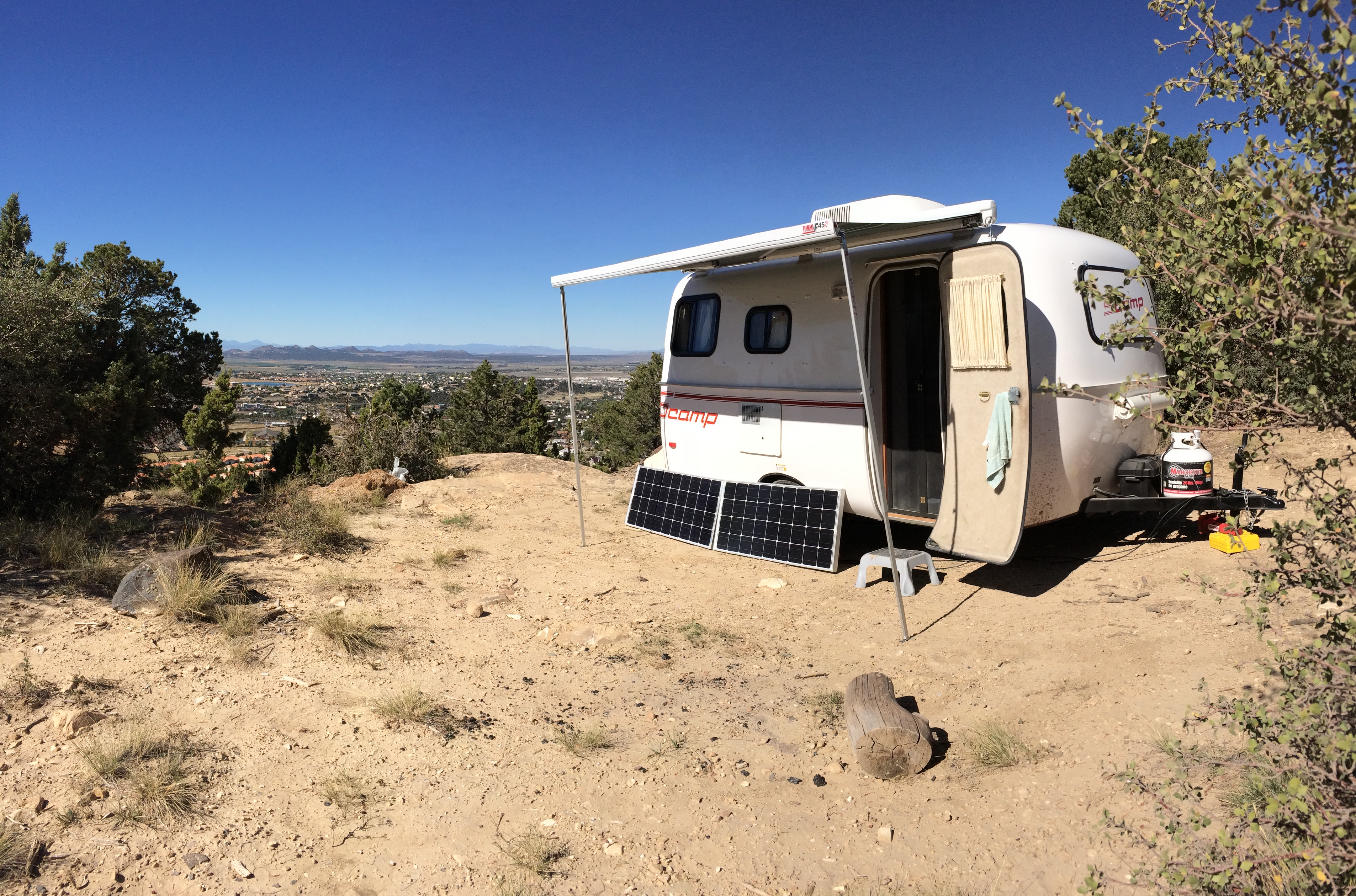
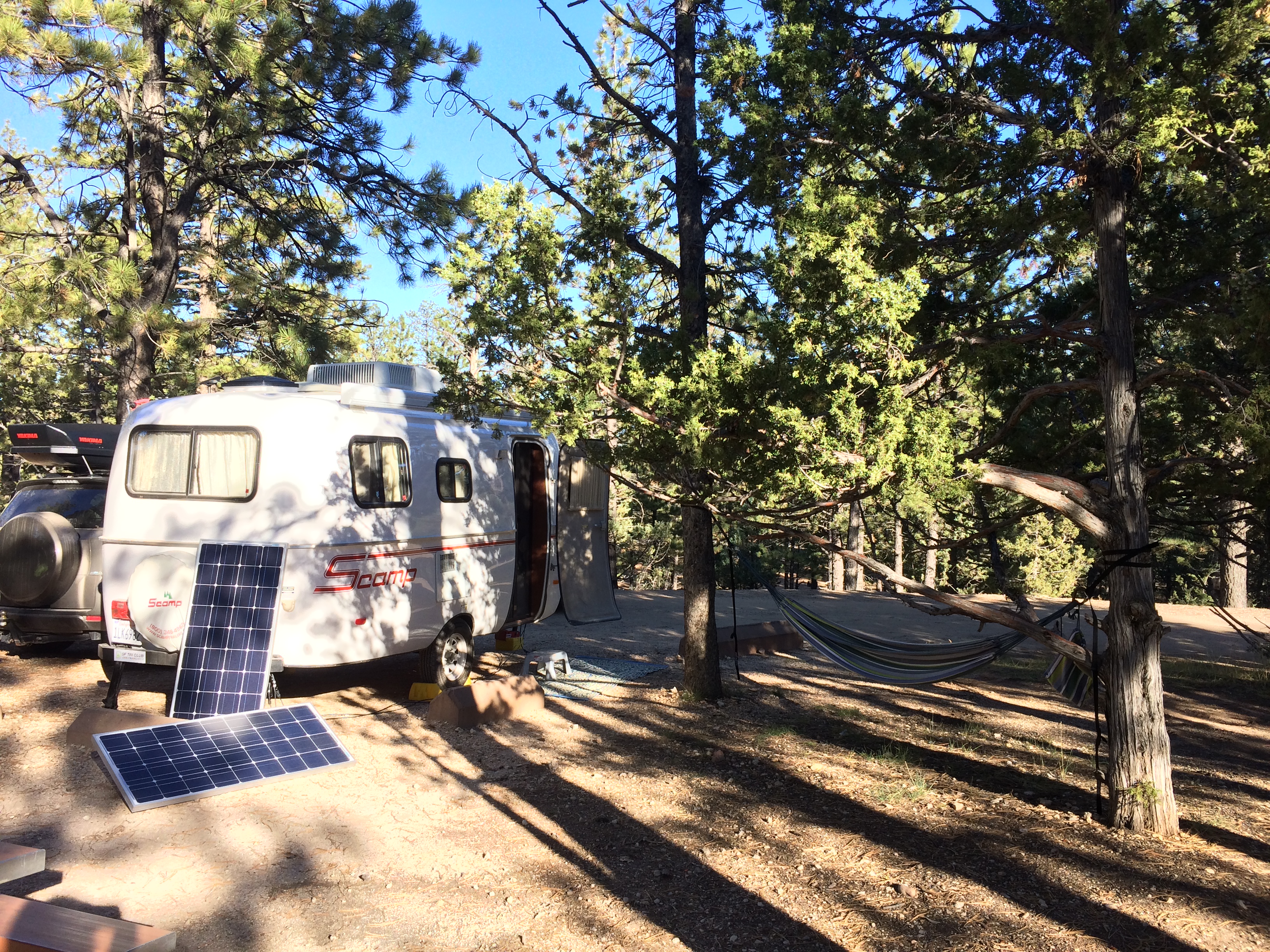
– Because we primarily boondocked, we hardly ever used the power outlets in Scromp. All the outlets are only usable when properly hooked up to an electric source. Chris ended up installing a 12V outlet, which we used heavily for charging our phones and laptops. Solar power fed our battery, which produced energy through the 12V outlet, which kept our electronics running on our “work” days.
– We took advantage of long drives by recharging our electronics in the car. If Chris needed the 12V outlet in Scromp, I’d let my laptop battery run low. Chris’ 2012 Toyota RAV4 not only has a 12V outlet (standard on all cars) but also a standard 110V AC power socket. Within a couple hours, our laptops, phones, Jambox, or other electronics would be fully charged. Between visiting sites, we each took a zillion photos which in turn drained our phone batteries. We kept 12V USB cables for our phones in the car at all times, so by the time we arrived at our next destination, our phones would be recharged and ready to go.
GARBAGE
– We had the smallest trashcan in order for it to fit in the bottom cabinet. It would fill up daily, which meant I had to throw out a small bag of garbage bag everyday. Even in my regular home I use small trashcans. Throwing out garbage more often means less garbage in my home, less rotting food, less stink. The idea of holding onto giant garbage bags for long periods at a time is disgusting. Garbage also becomes more difficult to dispose of as it quantifies. The basic rule of thumb with garbage: the smaller it is, the cleaner your home and the easier to get rid of.
– My typical garbage disposal routine was leave the garbage bag behind my car seat, arrive at a gas station or park, and dispose the little bag in one of the many garbage cans available. I can’t imagine doing that with a giant bag of garbage, especially at a gas station.
POTTY
– One of my biggest fears of trailer living is clogging the toilet with toilet paper. At home we always use quality toilet paper, but in the RV, it must be single ply. To conserve TP and ease my fear of clogging the toilet, I usually counted out each square of TP before use: four squares for #1, and 5-6 squares for #2. Unraveling limitless toilet paper was a luxury only in the home.
– I never had to buy toilet paper on the trip. Not once. Maybe it was me being cheap, but every time I spotted a mostly used roll of toilet paper sitting on top of the canister in a public bathroom, I would just pocket it. Most places (gas stations, parks, fast food restaurants) had a roll with 20-30% of toilet paper remaining, but patrons would never use them anyway. They always used the fresh roll. So why not, right?
– We tried to avoid doing #2 (pooping) in our toilet as much as possible. Our morning routine typically consisted of holding it in until we arrived at a nearby gas station or at a park visitor center/trail head. Chris would even strategically hold off on his morning coffee until we relieved ourselves at the nearest restroom.
LAUNDRY
– Like in Southeast Asia, we mostly wore merino wool shirts and undergarments. Their durability, warmth, and quick-drying, anti-stink fabric made up for their hefty price tags. I’d wear the same shirt for 4-5 consecutive days.
– Initially our plan was to bring enough clothes to last us 2 weeks to avoid frequent laundry trips. I even kept a hamper bag in the closet to store our collective dirty clothes. In the end we only went to a Laundromat once because we had the luxury of doing our laundry at our friends’ and family’s homes.
***
Trailer living is absolutely fun, but with the freedom comes a number of minor inconveniences that we discovered along the way. We’ve upgraded and are constantly upgrading Scromp; the trailer is always a working project. Scromp is only 13’x6′ and we can’t imagine what it’s like owning a home.
Not only did we explore the wondrous parks and splendid cities of America, we also visited more friends and family than we imagined seeing. Between us, we had no idea just how many people we knew scattered across the whole country. Stops at friends and family’s homes included (in the following order): Salt Lake City, UT, Castle Valley, UT, Longmont, CO, Des Moines, IA, Cedar Rapids, IA, Chicago, IL, East Lansing, MI, Brooklyn, NY, Lansdale, PA, Germantown, MD, Richmond, VA, Turners Station, KY, Elgin, TX, San Antonio, TX, Phoenix, AZ, San Diego, CA, Palm Springs, CA, Santa Cruz, CA, and Napa, CA.
Would we do this trip again? In a heartbeat. I’m already thinking about our next 3+ month road trip–I think we’ll travel around the Pacific Northwest next time around. I expect we’ll keep learning as we (Chris, Scromp, and I) progress further in our travels, and I’ll definitely share it in blog posts. In just a couple months we’ll be heading for South America for some more international adventure, and I’ll write more when that time comes. Until then…keep traveling, and always keep learning! =)


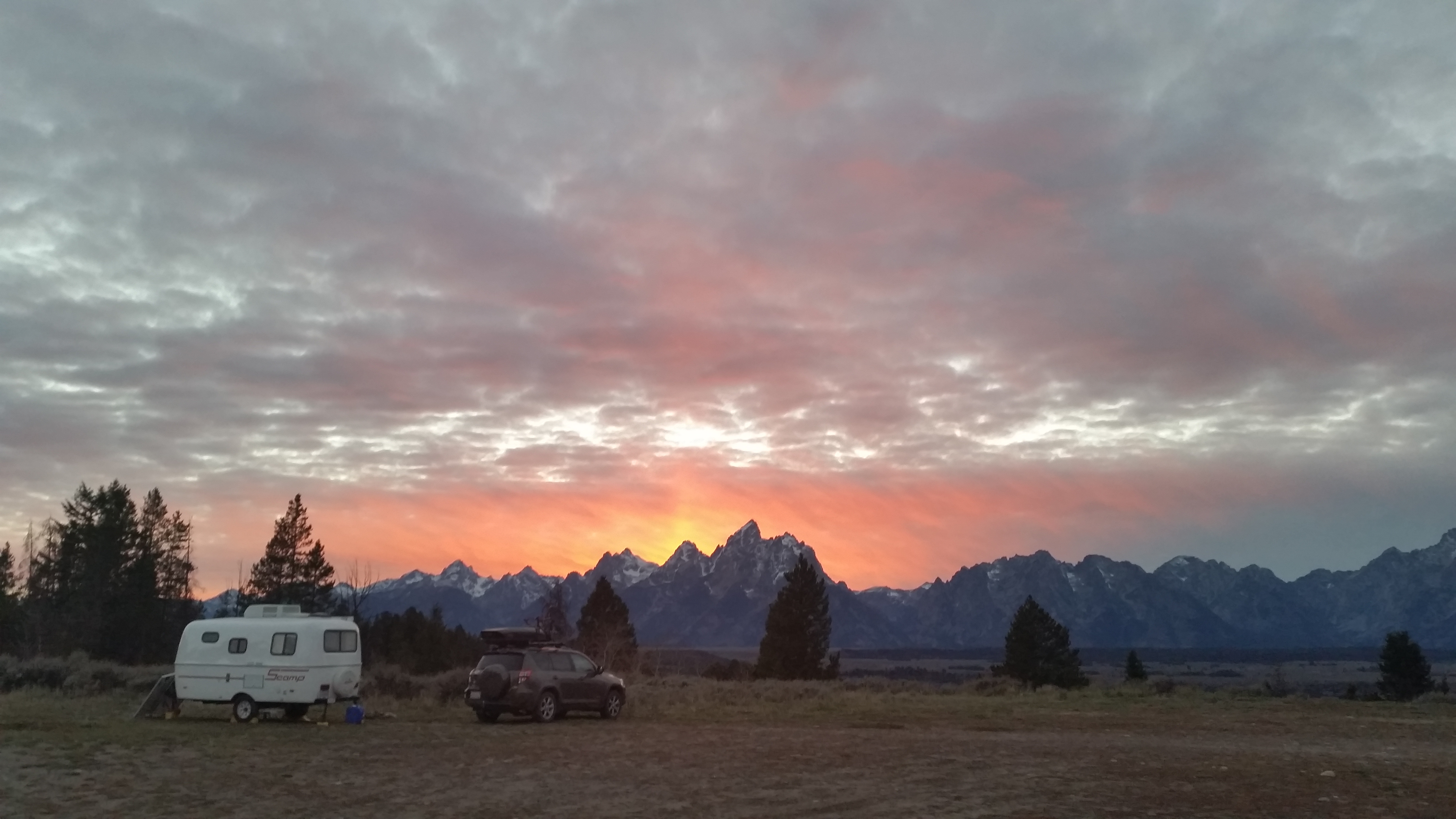
What a great post! Thanks for sharing all the wonderfully helpful tips. If you haven’t already, will you please consider sharing this post to the Facebook pages “Glampers on the Loose” and “Scamp Travel Trailers”? They are awesome pages where people share all kinds of tips with each other. Thanks again, and safe travels!
Thank you so much for this fabulous account of your travels. My husband and I are seriously considering traveling in US and will follow your tips for sure. Nina